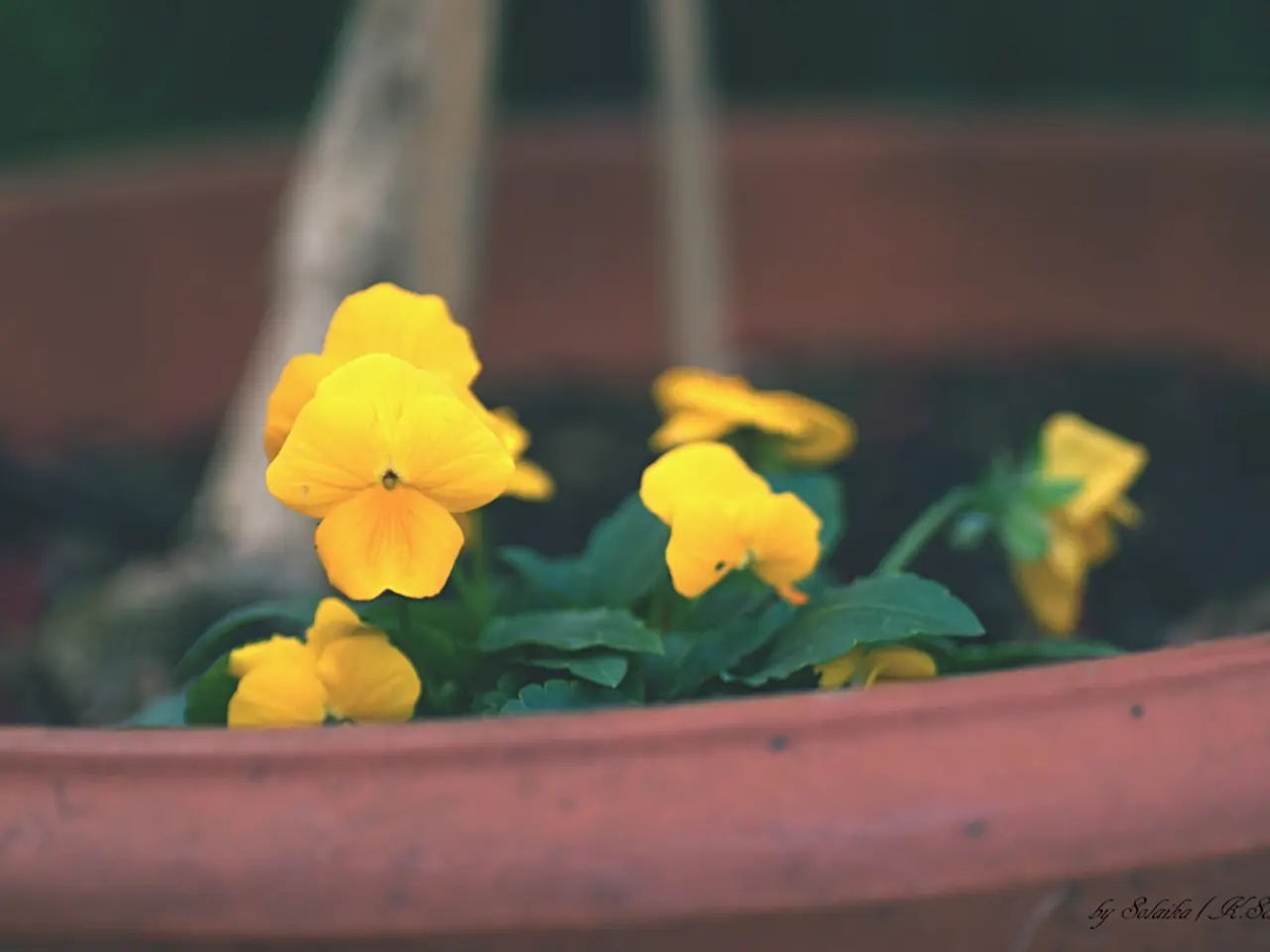Guide for Repotting Orchids: Essential Steps for Vibrant Flowering
In the world of indoor gardening, orchids are a popular choice for their stunning blooms. However, to ensure these plants continue to thrive, it's essential to know when and how to repot them. This article provides a straightforward guide to repotting orchids, focusing on the key signs to look for and the ideal potting mix and pot size.
Firstly, it's essential to understand that orchids need to be repotted regularly. The right time to repot orchids is shortly after you purchase them and then when the roots start to outgrow the pot or the potting medium breaks down, usually about once a year or every 1-2 years for popular types like Phalaenopsis orchids [1][3]. Another key indicator is when the orchid has stopped flowering or when roots dry out quickly between waterings, signaling the potting mix no longer retains moisture adequately [1][5].
For the recommended potting mix, orchids require a special loose, chunky medium that provides excellent aeration and drainage to keep roots healthy. Common components include fir bark, sphagnum moss, perlite, and charcoal. These materials create air pockets and prevent root rot by allowing air flow and quick drainage. Regular garden soil should be avoided as it holds too much moisture and suffocates roots [1][2].
Regarding pot size, orchids prefer to be in pots that fit their root mass snugly with only a little room to grow. A pot too large retains excess moisture, which can cause root rot. Most guidelines recommend choosing a pot just 1-2 inches larger in diameter than the current one [2][4]. Slotted pots or those with multiple drainage holes and good ventilation are ideal to promote airflow and drainage around the roots [2].
When repotting an orchid, prune old flower spikes to encourage new stem growth. Tease the orchid out of its container, and remove all old medium from the pot and root system. Fill in around, under, and atop the roots, packing it in densely while maintaining air gaps. Use a chopstick or small dowel to push the medium between the roots.
If roots are dry, soak them in room-temperature water for a few minutes, then gently untangle the roots. Orchids are sensitive to bacteria and germs. Use a solution of 1/2 cup of household bleach and 1 gallon of water to sanitize the planter and tools.
In summary, when to repot: After purchase, once a year or when roots outgrow the pot or mix deteriorates (usually every 1-2 years), or when flowering ends [1][3]. Potting mix: Loose, chunky mix with fir bark, sphagnum moss, perlite, charcoal; avoid garden soil [1][2]. Pot size: Just slightly larger than root mass (1-2 inches bigger diameter), preferably with good drainage and ventilation (plastic, clay, or especially slotted pots) [2][4].
By following these guidelines, you can ensure your orchids remain healthy, with roots that have enough space without excess moisture retention, while the potting medium maintains proper airflow and drainage. Happy repotting!
[1] Orchid Care: A Complete Guide to Growing Beautiful Orchids at Home, D. G. Hessayon [2] The Complete Book of Orchids, David Mabberley [3] Orchids: A Visual Guide, Timothy Pearson [4] Orchid Care: A Beginner's Guide, John D. Williams [5] The Orchid Grower's Handbook, Timothy Pearson and Charles M. Hartman
To maintain the health of your orchids, it's important to repot them regularly, especially after purchase, when roots outgrow the pot or the potting medium deteriorates, which usually occurs every 1-2 years. When repotting, choose a loose, chunky potting mix that includes materials such as fir bark, sphagnum moss, perlite, and charcoal for adequate airflow and drainage. opt for pots that fit snugly around the root mass, with only a little room to grow, and ensure they have good drainage and ventilation, preferably plastic, clay, or especially slotted pots.




